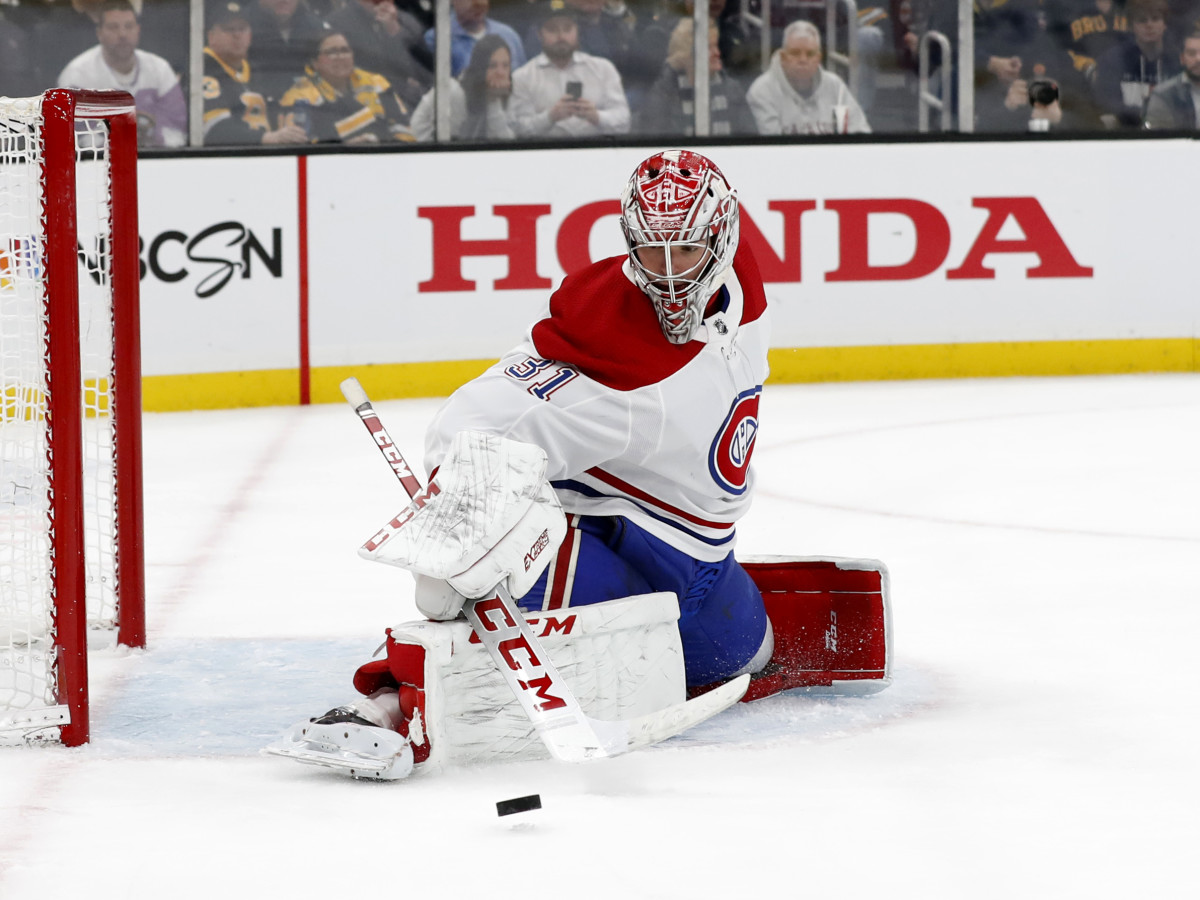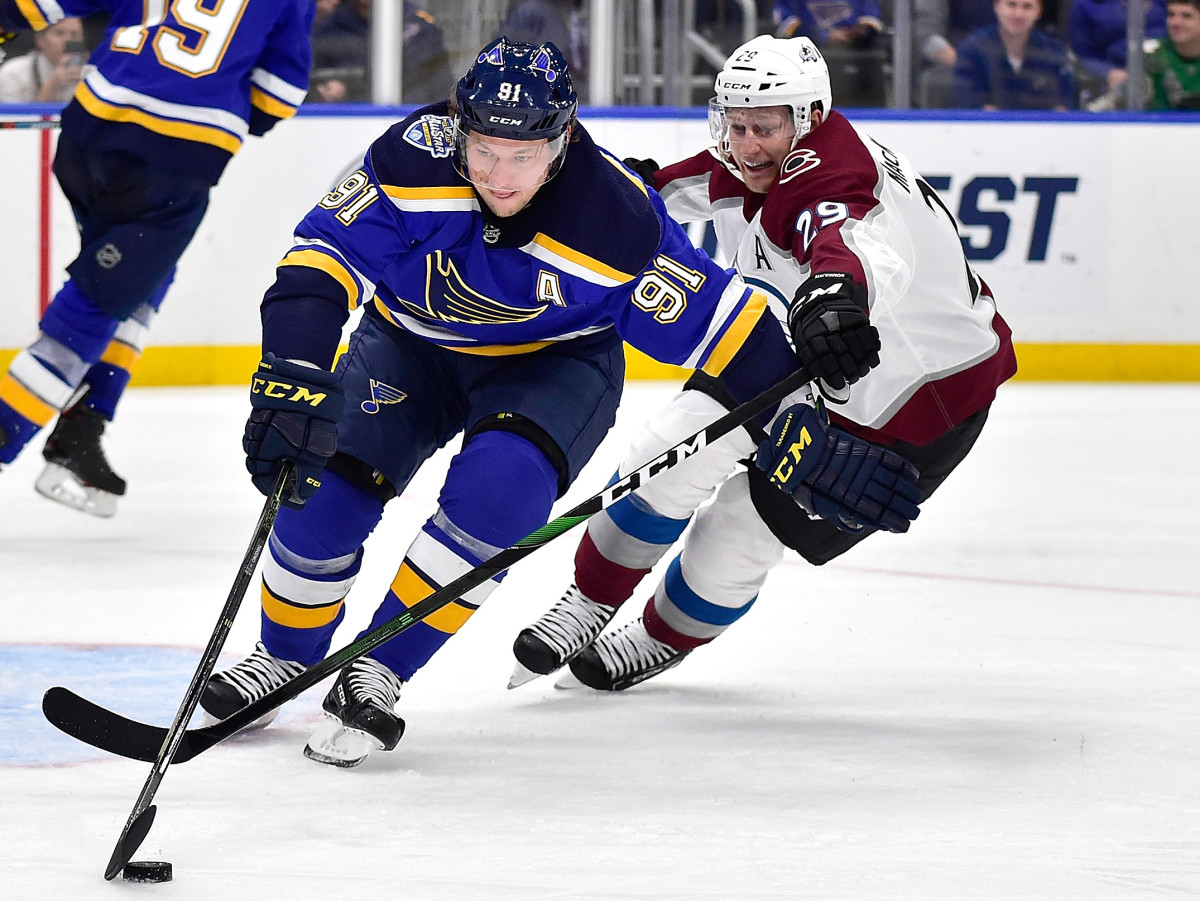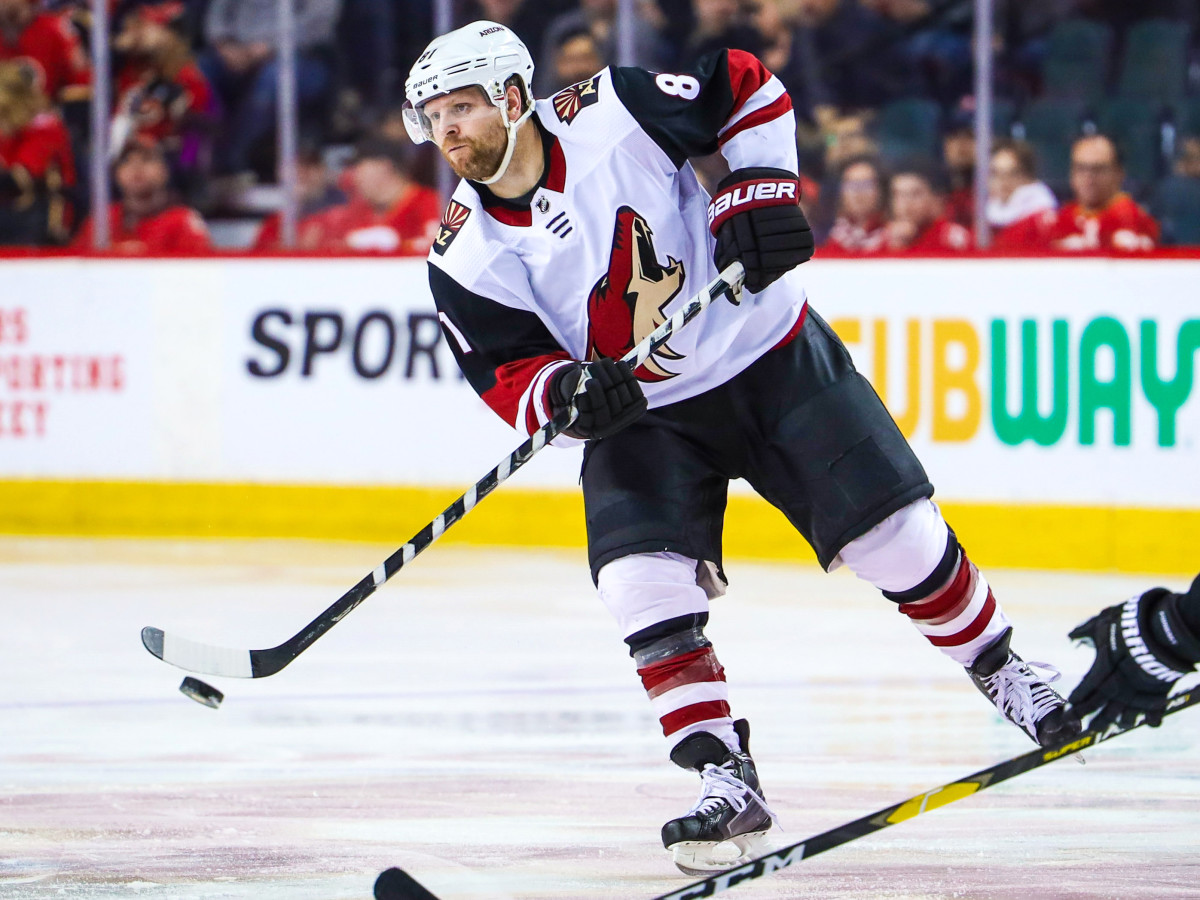The X-Factor for Each Team in the NHL Postseason
After months of waiting, the return of hockey is finally here. After the NHL paused the 2019–20 season due to the coronavirus pandemic, the league’s first Return to Play exhibition took the ice on Tuesday afternoon with all the teams arrived in the bubble. Up next: the start of the postseason, beginning on Aug. 1. With numerous factors at play—health, chemistry and the long break—we looked at each team’s x-factor heading into the playoffs.
EASTERN CONFERENCE
Boston Bruins
Secondary scoring: a recurring concern during Bruce Cassidy’s tenure. Speedy winger Anders Bjork has auditioned for the final top-six role with Ondrej Kase absent through the team’s arrival in Toronto. Bjork now has the opportunity to fill that hole after scoring nine goals and 10 assists in his first season unmarred by injuries. A superstar trio up front, staunch defensive play and Vezina finalist Tuukka Rask makes the Bruins ready-made for bubble hockey otherwise.
Tampa Bay Lightning
On a Tampa Bay squad littered with offensive talent, Anthony Cirelli is the Lightning’s premiere shutdown forward, logging the league’s second-most penalty kill minutes and frustrating other teams’ top players. He garnered 30 Selke votes as a rookie—even as the award lags in recognition of defensive prowess until offensive contributions catch up—and his two-way play helps transform the Lightning from a scoring machine to a multidimensional juggernaut.
Philadelphia Flyers
Matt Niskanen’s chemistry with Ivan Provorov helped Provorov blossom into one of the league’s top defensemen, while also bringing the Flyers from a bottom-three defensive team to one that ranks seventh in goals allowed per game (2.77). Niskanen is the only player on Philadelphia’s roster that has won the Stanley Cup and his positional soundness on the blue line alleviates chaos in front of Carter Hart.
Washington Capitals
Michal Kempny’s renewed health might prove to be a bigger boon to the Caps’ blue line than deadline acquisition Brendan Dillon. Kempny struggled after undergoing surgery on a torn left hamstring and Washington’s defense did too, as they allowed the sixth-most high danger attempts against per 60 minutes (11.32). Depth will be crucial after Braden Holtby’s inconsistent 2019–20 season and backup Ilya Samsonov’s absence from the entire postseason.
Pittsburgh Penguins
The newly formed third line of Patrick Marleau, Jared McCann and Patric Hornqvist provides the Penguins with depth beyond Sidney Crosby and Evgeni Malkin and acts beyond the third line’s usual checking duties. The group’s effectiveness hinges on Jared McCann’s ability to thrive as the third-line center, as Jordan Staal and Nick Bonino did during Pittsburgh’s multiple Stanley Cup runs.

Montreal Canadiens
At $10.5 million per year, Carey Price is the most expensive x-factor on this list. His play has waned in the last three seasons, but Price remains one of the best netminders of his generation. The Canadiens, as the last team included in the new playoff format, can become the league’s agent of chaos if Price turns in a dominant run.
Carolina Hurricanes
Jaccob Slavin has a claim to the title of best defensive defenseman and that’s going to be tested early against the Rangers’ Artemi Panarin and Mika Zibanejad. With Dougie Hamilton potentially out for the qualifying round, Slavin will further shoulder shutdown responsibilities. The Hurricanes enter the postseason with one of the shakier goaltending situations in Petr Mrazek and James Reimer and some controlled order in front of them will be needed.
New York Rangers
Henrik Lundqvist might not be the Rangers’ starting goaltender in the playoffs and that isn’t the cause of widespread panic. Instead rookie Igor Shesterkin, who posted a 10-2-0 record and a .935 save percentage, will take the reins. The Hurricanes will bludgeon the Rangers with shots (33.3 per game) and New York will let them (34.0 allowed per game), making Shesterkin the team’s last, and potentially primary, line of defense
New York Islanders
Even if the defense holds against the league's sixth-best offense, Mat Barzal and the Islanders’ power play has to contribute enough to keep pace. The Islanders converted at a 22.7% clip when jumping out to a 16-3-1 start, but the team sputtered with a 19-20-9 record in its next 48 games as the power play dipped to 15.3% in that span.
Florida Panthers
Sergei Bobrovsky keyed the Blue Jackets’ sweep of the Lightning, stopping 100 of 105 shots after Columbus trailed 3–0 in Game 1, and almost repeated his performance against the Bruins. One year and a seven-year, $70 million contract later, and the magic evaporated. Bobrovsky had his worst statistical year with his new team. If he can recapture some of last year’s magic, the Panthers become a nightmare opponent in the Eastern Conference.
Toronto Maple Leafs
After breaking his right hand on Feb. 25, Jake Muzzin is healthy and skated during July training camp. Toronto will benefit from Ilya Mikheyev’s return, but the team proved it can’t always outscore its defensive woes. Muzzin’s presence gives the Leafs a stabilizing force on the blue line and a stopgap if Frederik Andersen doesn’t rebound into top form.
Columbus Blue Jackets
John Tortorella squeezed the most out of a depleted roster, earning him a Jack Adams nomination, and his experience represents the Blue Jackets’ one significant advantage over the Leafs. He’ll need to best position Cam Atkinson, Oliver Bjorkstrand and Seth Jones—all back from injury—to frustrate Toronto’s transition game, implement an unyielding forecheck and devise a game plan to abate the talent disparity between both teams.
Best Bets for Each Series in the Stanley Cup Playoffs Qualifying Round
WESTERN CONFERENCE
St. Louis Blues
St. Louis made no moves at the deadline, but Vladimir Tarasenko returning at full health is the most significant addition for any team entering the bubble. A true sniper, Tarasenko bolsters St. Louis’s offense, which learned to cope without its top goal scorer in his five-month absence.

Colorado Avalanche
Nazem Kadri, at his best, gives the Avalanche the depth they need from a second-line center. Sure, Colorado revolves around Nathan MacKinnon, who carried the Avalanche within one win of the Western Conference finals, but the Avs need more when he comes down from his otherworldly stature.
Vegas Golden Knights
With the top six largely unchanged, the Golden Knights searched for stability for an underperforming third line. Now, Alex Tuch is recovered from a lower-body injury sustained in February and provides size and speed next to Chandler Stephenson and Nicolas Roy, forming Vegas’s largest line.
Dallas Stars
Denis Gurianov—not Jamie Benn, Tyler Seguin or Alexander Radulov—led the Stars in goals at the time of the season’s pause. Without a sudden revelation through line changes or renewed production from Seguin, Dallas is counting on Gurianov’s offensive contributions to avoid an extreme goal shortage.
Edmonton Oilers
The Oilers spent two second-round picks to acquire Andreas Athanasiou, who made little impact in nine games with Edmonton despite playing next to Connor McDavid. Worse yet, Tyler Ennis bumped Athanasiou off the second line by the end of training camp. If coach Dave Tippett can unlock the former 30-goal scorer’s potential, Athanasiou gives the Oilers game-breaking speed and, most importantly, depth beyond McDavid and Leon Draisaitl.
Chicago Blackhawks
Happy to be here, the Blackhawks skated into the postseason by virtue only of the expanded format. Chicago’s hopes rest with Jonathan Toews and Patrick Kane, but there’s a remote possibility Corey Crawford winds the clock back to the team’s 2013 and ‘15 Stanley Cup runs. He had posted a .928 save percentage in 20 games before the season’s pause and recently rejoined the team after testing positive for COVID-19 and missing most of training camp.
Nashville Predators
Juuse Saros usurped the starting role from Pekka Rinne, but the Predators’ netminding situation is unresolved without a clear 1A entering the playoffs. Rinne carries his reputation—one Vezina, the starter of every Preds’ playoff game since 2011—despite a down season. But Saros, 25, is the team’s long-term answer and could take over for Rinne, again, in the chaos of bubble hockey.
Arizona Coyotes
Phil Kessel said this season has seen “probably my most injuries I’ve had,” which would explain away some of the lack of production (14 goals, 70 games). The Coyotes are sturdy in net with either Darcy Kuemper or Antti Raanta and the backend has held strong without true star power. Arizona needs goals from someone other than Conor Garland, though, and Kessel could put a disappointing regular season behind him with a strong playoff showing.

Vancouver Canucks
Two separate concussions sidelined Micheal Ferland for the bulk of the season, but he rejoined the team during training camp on July 16. Ferland, an aggressive forechecker who notched back-to-back 20-goal seasons, gives the Canucks a physical edge heading into what should be a competitive series.
Minnesota Wild
When Kevin Fiala started scoring, the Wild started winning. Fiala reeled off 14 goals and 26 points in 18 games before the pause, guiding Minnesota to a 12-5-1 record in that span and dark horse status leading into the postseason. Otherwise surrounded by aging forwards, Fiala is the Wild’s offensive dynamo and key to moving past the qualifying round.
Calgary Flames
Johnny Gaudreau and the playoffs haven’t been best buds: He has failed to score in his last nine postseason appearances, with his last goal coming in a five-game series loss to the Ducks in 2015. Gaudreau and the Flames’ top line stalled after a prolific 2018–19 scoring rampage, but any return to former production would instantly lift Calgary out of its struggles.
Winnipeg Jets
Without Connor Hellebuyck, the Jets would have fallen on harder times with a patchwork blue line. As much will be true in the postseason. Hellebuyck, the Vezina frontrunner, kept Winnipeg afloat with a league-leading six shutouts and second-best goals saved above expectation (22.37).
